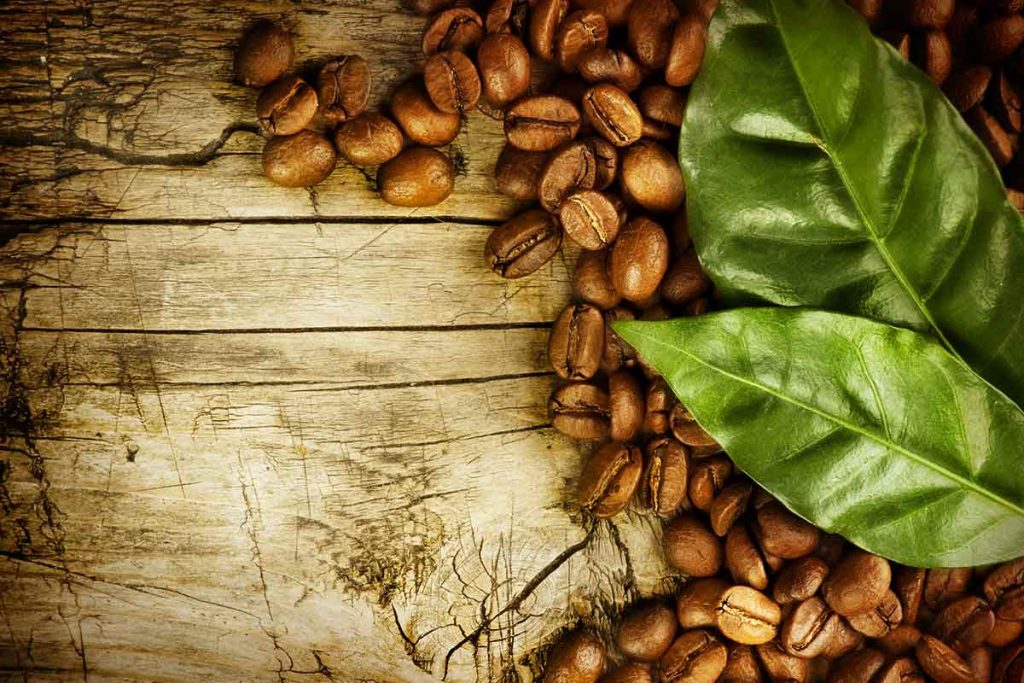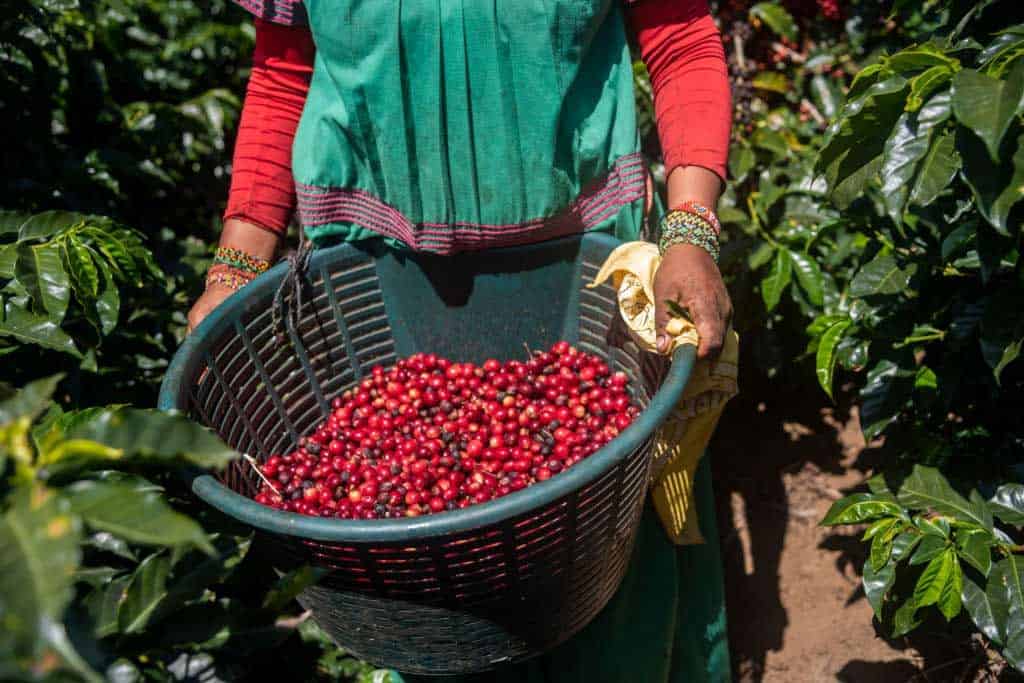Where Do Coffee Beans Come From?

Do you ever take a sip of your rich and bold coffee in the morning and start wondering, “where do coffee beans come from?” Well, you will find your answer right here with a few other interesting facts about those flavorful beans you love so much.
Coffee beans have become a popular commodity worldwide, but surprisingly they do not originate from every country. Even though countries produce their own unique coffee beans, they may not be indigineous to those areas.
Luckily for coffee lovers, these magical beans have traveled around the world while growers find new ways to nurture the raw beans. As growers take coffee to new areas, they try and test different growing methods to discover new flavors and qualities. With these exotic varieties, everyone can find a favorite blend with a bit of research and taste-testing!
By the time you’ve taken that first sip of your brew, the beans are a long way from where they started their journey. So now the question is: where did coffee beans come from?
Origins: Where Do Coffee Beans Come from?
The very first coffee beans were discovered in Ethiopia, on the continent of Africa, by a goat herder who noticed his goats looking a bit buzzed.
On further examination, he realized the goats had been eating a specific plant — the green and red berries we find on coffee plants.
Once people identified the beans’ value, the plant began traveling around the world, and today there are five top coffee-producing countries across the globe. These countries include Vietnam, Colombia, Brazil, Indonesia, and, of course, Ethiopia, so you will often see beans shipped from these places.
The best growing conditions for these beans are found in the coffee belt that wraps around the globe. This belt lies on the equator between the Tropics of Cancer and Capricorn and offers high altitudes, which are needed for coffee plants to grow. The moist and tropical conditions of these regions are also perfect for coffee plants to flourish.
The Types of Coffee Plants
We already know that the raw green and red coffee berries are grown on coffee plants, but what are these plants exactly? Well, if you’ve heard of Arabica and Robusta coffee, then you have heard about the type of plants, even if you didn’t know it.

The plants look similar to a berry bush, and mature plants can grow fairly tall in size, from around six to 15 feet. The leaves are waxy and dark green with tints of yellow or purple. Then, we have the two main varieties that determine the beans’ taste: Arabica and Robusta.
The Arabica Plant
The Arabica plant, or coffee arabica, is often known as the premium, higher-quality coffee. However, the type of coffee you prefer ultimately depends on your taste preferences. While these beans are grown at higher altitudes, the coffee created from these plants offers a complex flavor that is softer and often sweeter than other coffee variants.
This coffee also has subtle fruity flavors with notes of berry in it. However, the acidity in these beans is relatively high, so take note if you suffer from stomach irritation when drinking coffee.
This type of coffee often contains less caffeine in the beans than the Robusta variety. You will also find sub-varieties within coffee arabica, and these come with their own flavor profiles. To name two, you might have seen Bourbon or Typica on the label of your coffee beans.
These are relatives of the complex Arabica coffee, and it is always good to try them all out and take note of your favorite varieties. This will help you select the right beans from new roasters when you start branching out your coffee tastes.
The Robusta Plant
Made from the coffee robusta or coffea canephora plant, Robusta coffee comes from beans with an earthy flavor. Some people may find these beans a bit bitter or grainy at first, but the more you drink your cup of joe, the smoother it becomes.
These coffee plants are hardier than the previous variety and can withstand harsher conditions when growing. This has resulted in these beans carrying the coffee culture worldwide due to the accessibility of this plant.
There are two sub-varieties or Robusta: C. c. robusta and C. c. nganga. These produce a lot of the lower-quality coffee found around the world. While many roasters will leave Robusta off the label because of its reputation as a subpar coffee variety, these beans are often added to blends to add body and more caffeine.
The beans produced from these plants are higher in caffeine than the Arabica variety. The flavors found in the Robusta beans lack complexity compared to other types, but they can bulk up coffee blends or offer a more affordable alternative.
Other Varieties
While you will most likely come across Robusta or Arabica beans when purchasing your delicious roasted coffee beans, new varieties are coming out all the time as growers experiment with new plants and flavor combinations. These alternatives may become more popular in the future — the plants they come from are hardier in the increasingly warmer climate.
If you come across Excelsa or Liberica beans, these come from coffee plants that can stand up to the changing climate.
Another common West African variety is now making a comeback as it is also quite hardy in the warmer climate across the globe. This variety is known as Coffea stenophylla.
How Are Coffee Plants Grown?
Once a new coffee bush is planted, it takes roughly one year before it begins flowering. It will still need up to three years before the fruits start to appear. These berries contain the coffee beans we love so much.
When the plant has matured well in a shady spot, it can produce beans for up to sixty years if nurtured lovingly throughout its lifespan.

Since growers have begun moving plants into sunny areas for mass production, they have significantly reduced these plants’ lifespan. Usually, they choose to grow hybrid crops that can survive in the sun. This is why shade-grown coffee beans are generally more authentic than other varieties.
Once the plant has produced ripe berries that are ready to be picked —which can take up to nine years at a commercial producing level — growers harvest the berries.
Harvesting the Coffee Berries
So now that we have coffee berries ready to pick, what about the coffee beans? Where do they come from?
The harvesting of the beans is primarily done by hand-picking the ripe berries from the bushes. However, in some flat areas, the process can be done mechanically for a quicker harvest.
The Dry Method
Once harvested, the berries need to be dried before the farmers can extract the seed from the berry. It is this seed that you know as a coffee bean. The harvested beans are left out in drying beds to dry out.
The berries are well looked after here; farmers regularly mix them with a rake to prevent the berries from spoiling. They are also often covered at night and in rainy weather to prevent the beans from getting wet.
Once completely dried out, the berry’s husk is removed, and the seeds are extracted. They are now ready to be roasted, ground up, and brewed for your steamy cup of joe.
These naturally dried beans are usually full of fruity flavors, as the pulp and husk soak into the seed to give it that complex taste.
The Wet Method
Some farmers choose to use the wet method to harvest coffee beans from coffee berries, which is quicker than the dry method I explained earlier. Here, the beans are fed through a machine that strips the pulp layer from the seeds as soon as the berries have been harvested.
The seeds are then soaked in large water tanks for up to 24 hours to dissolve another layer covering the seeds. While sitting in the water, the beans absorb flavors from this outer husk.
After soaking, the beans still need to be dried out thoroughly before they are ready to be shipped and roasted.
Whichever method growers use, the dried-out seeds (or coffee beans as we know them) are small and look like green or beigel peas. These beans are not pleasant to eat and taste very grassy.
Through the roasting process, the bold and delicious coffee flavors are extracted and encased in the golden-brown beans we buy in freshly sealed bags.
There are multiple roasting methods used for coffee beans, and there are even some great home roasting methods you can try if you would like to enjoy the freshest beans possible. These raw coffee beans can keep for over a year without losing freshness, whereas roasted beans are only good for roughly three months.
FAQs
Where is the birthplace of coffee?
Food historians believe that coffee berries were first discovered in Ethiopia, situated on the African continent. A goat herder noticed his goats were looking intoxicated and realized they had been munching on a specific berry plant.
This led to the discovery of coffee and its tasty flavors. The plants were then relocated around the world but mainly within the coffee belt regions near the equator. Thus, new coffee-growing methods and harvesting processes came about.
What are the main types of coffee?
There are four major types of coffee beans, and two of these are most common in coffee circles. The Robusta and Arabica beans are well-known and found in almost every coffee roastery. While the Arabica beans are premium quality, the Robusta variety is cheaper and less flavorful.
Two other types of coffee are slowly gaining popularity — Liberica and Excelsa. These varieties have very different flavor profiles, stand up to warmer climates, and are likely to become just as well-known as the two more common types.
Which country produces the most coffee?
Even though Ethiopia was the birthplace of coffee, other countries have ramped up production to become more popular in terms of coffee. Brazil is currently the top-producing country of coffee beans, followed by Vietnam.
Next on the list are Colombia and Indonesia in terms of production rates. Ethiopia is found fifth on the list in terms of production. However, if you travel to Ethiopia, you can still find wild coffee bushes growing in certain regions.
Time to Get Growing… Or Roasting!
Now that you know where coffee beans come from and how they are grown, you may be rushing out to buy some seeds and try your hand at growing your own. While you can start your own bush at home, just remember that a specific climate is needed.
Since coffee plants take several years to produce the berries that can be dried and used for coffee, you may be better off buying some raw beans to roast up instead. Either way, the coffee growing process is an interesting one and shows how much the coffee plant influences your cup of coffee’s flavor.
As a coffee enthusiast, you may be excited to try roasting up your own beans with all this knowledge, so check out some of the best roasting machines on our site if you want to be adventurous with your coffee habits.
Owen is a writer and editor at Caffe Streets who considers himself a coffee fanatic. He spends his time researching and testing different coffee beans and brewing methods and sharing what he learns with others.





